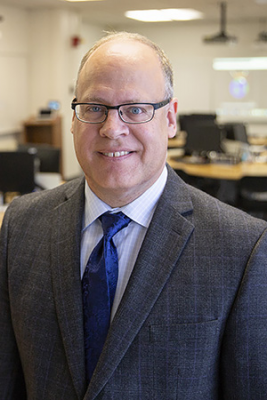Creativity, Discovery, Engagement
Learning Like No Other

- Augusta University
- Science & Mathematics
- Physics and Biophysics
- Seminar Series
Materials Science and Biophysics Research Seminar Series
Stay up-to-date on the latest research and build relationships with academics at the Materials Science & Biophysics Seminar Series, which bring experts from around the world to campus to discuss their recent findings. Everyone is welcome!
Spring 2026 Seminar Series
|
Confusing Neural Networks in Simulational PhysicsFriday, January 23, 2026 Health Sciences Building EC 1218 2:00 - 3:00 PM Host: Dr. Trinanjan Datta (tdatta@augusta.edu) With the increasing pace of AI developments in corporate labs, questions about the future of academic groups in this field become louder. The most striking example in recent years might be AlphaFold, a machine-learning model that predicts the 3D protein structure from its amino-acid sequence and largely outperforms decade-long research in academia. This has led people to ask questions like “Are we (computational physicists) out of a job now?” Although understandable, I think this sentiment is too pessimistic. In this talk I willpresent two of our recent, student-led research projects where we use machine-learning tools and methods to analyze and inform conventional, statistical computer simulations. One of them is based on us purposely confusing neural networks, the other uses a quite confusion. |
|
|
Title to be announcedFriday, March 27, 2026 Health Sciences Building EC 1218 2:00 - 3:00 PM Host: Dr. Trinanjan Datta (tdatta@augusta.edu) Abstract to be announced ...
|
|
|
Title to be announcedFriday, April 17, 2026 Health Sciences Building EC 1218 2:00 - 3:00 PM Host: Dr. Trinanjan Datta (tdatta@augusta.edu) Abstract to be announced ...
|
|
 Barrett Wells, PhD, Associate Dean for Life and Physical Sciences, Professor of Physics
|
Title to be announcedFriday, April 24, 2026 Health Sciences Building EC 1218 2:00 - 3:00 PM Host: Dr. Amani Jayakody (ajayakody@augusta.edu) Abstract to be announced ... |
|
Seminar Series Organizers
- Dr. Trinanjan Datta - tdatta@augusta.edu
- Dr. Shaobin Miao - smiao@augusta.edu
- Dr. Mustafa Culha - mculha@augusta.edu
- Dr. Amani Jayakody - ajayakody@augusta.edu
Seminar series sponsored by: Augusta University Research Institute, College of Science and Mathematics, Department of Physics and Biophysics
Support Science & Mathematics
Give Today
Your gift to the College of Science and Mathematics endorses and supports the learning experience at the CSM. Join us in training and educating the leaders and researchers of tomorrow.
Gifts are tax-deductible to the extent allowed by law, less the fair market value of the benefits received. The CARES Act which became law on March 27, 2020, may enhance the tax deductibility of your gift. Please consult with your tax advisor.


